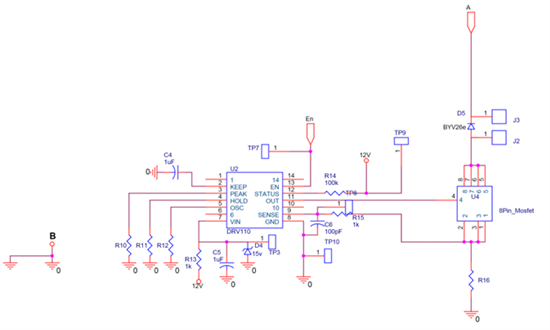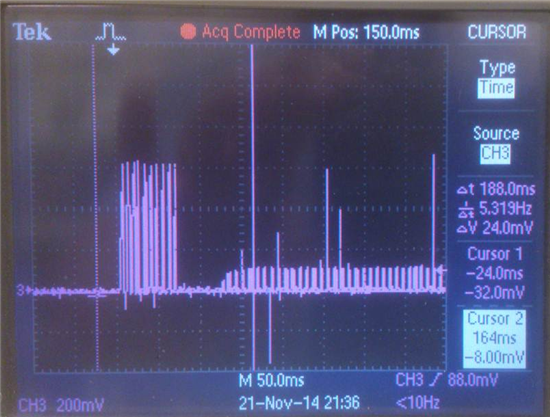Hello team,
Is there a minimum ON time sepc for OUT pin voltage on DRV110 device?
In one of the design I observed, as input voltage was increased, pulse width/frequency at OUT pin remained constant but it's peak value kept increasing!
Regards,
Mahendra Patel, TI





